Arson | NOVEMBER 11
As Jews in Chemnitz were struggling to come to terms with the brutal violence they had experienced two days before – the magnificent synagogue had been set on fire and destroyed during the November Pogroms, in the night from November 9 to 10 (later known as “Kristallnacht” or “Night of Broken Glass”), and 170 members of the community deported to the Buchenwald concentration camp – the community’s representative, the merchant Josef Kahn, was contacted by the town’s mayor. With mind-boggling cynicism, he demanded the removal within three days of the ruins of “the synagogue […] which caught fire in the night from November 9th to 10th, 1938.” If the order wasn’t carried out within the prescribed time, the municipal building inspection department (Baupolizei) would arrange clearance at the owner’s expense.
Solidarity | NOVEMBER 10
Even though the climate under the Vargas regime in Brazil was becoming increasingly anti-Jewish, refugees could count on the support of allies. Already in 1933, an aid organization for German-Jewish refugees had come into being in Sao Paulo. And in 1936 in Porto Alegre, where Bernhard and Anni Wolf had recently fled from East Frisia, refugees established a Jewish culture and welfare society. The overall attitude of the Church was ambiguous; nevertheless, a Catholic aid committee for refugees lent significant aid to the newcomers. After an unsuccessful attempt to arrange their immigration to Brazil at the consulate in Cologne, Bernhard’s brother Richard and his wife Jola pinned all their hope on their relatives in Brazil.
Relative luck | NOVEMBER 9
Richard Neubauer was lucky. When, during the November pogroms, throughout the night from the 9th to the 10th (later known as “Kristallnacht” or “Night of Broken Glass”), Nazi thugs destroyed the property of his relatives in Germany, he was already in safety in New York. In this letter, his brother Fritz describes to him in vivid detail the horrific destruction wrought upon Jews and their belongings and the terror caused by the brutality. The Neubauer brothers had inherited the Neubauer Print Shop in Ludwigshafen. Due to the destruction of the free press through its forced conformity under the Nazis, the print shop had lost all its business. Thanks to some lucky coincidences, Fritz, his wife Ruth, and their two children were in possession of train tickets making it possible to legally cross the border into Switzerland. Ruth had managed to salvage them from the wreckage of their furniture.
Political and other earthquakes | NOVEMBER 8
Days after his 12th birthday on April 15th, 1938, Harry Kranner, along with all his Jewish schoolmates, had been expelled from the Kandlgasse Realgymnasium in Vienna. By November, Harry’s mother, Gertrude, and his stepfather, Emil Fichmann, were making preparations for emigration. Harry shows great excitement about the prospect of traveling and the various pieces of equipment he’ll receive. In the November 8th entry in his new diary, given to him by his mother for the purpose of recording his emigration experience, he enthusiastically reports about his new leather gloves. But the bulk of the entry is concerned with the strong earthquake the night before.
Murder in Paris | NOVEMBER 7
On November 3rd, 1938, Herszel Grynszpan, a young Jew of Polish extraction, had received a message saying that his parents and two siblings had been expelled from their home in Hannover to Poland. The Polish parliament had recently passed a law according to which citizens who had spent five or more years abroad could be stripped of their citizenship. Fearing to be left irrevocably with over 70,000 Polish Jews, the Nazi regime had deported about 17,000 of them just days earlier. Herszel, who had managed to enter France in 1936, was living with his uncle and aunt at this point. Upset about the fate of his fellow countrymen, he walked into the German embassy in Paris on November 7th, shot to death a German career diplomat, 29 year-old Ernst vom Rath, and was arrested immediately.
Farewell for life? | NOVEMBER 6
In the meantime, Hedwig Weiler, the blossoming 18-year-old idealist whom Franz Kafka fell in love with during a vacation in Triesch (Moravia) in 1907 has turned into a PhD-holding academic and the wife of the engineer Leopold Herzka. The events of the year 1938 in Austria have caused their circle of friends to drift apart in all directions. On November 6, 1938, in a letter to her former neighbors in Vienna, the Buxspan (later Buxpan) family, she enumerates a long list of relatives and common friends, who have either emigrated already or are preparing to do so. What is especially hard for Hedwig Herzka is the prospect of her daughter, Edith, leaving for South America. It has made Hedwig a bundle of nerves.
More mosquitoes than in Palestine | NOVEMBER 5
With a documented presence reaching back as far as the 12th century and as the second largest community after Berlin, Jews in Frankfurt were a profoundly established part of society. But under the Nazis, Frankfurt Jews, like all of German Jewry, were made to feel like unwelcome strangers in their own city and country, and large numbers of them were leaving Germany. The November issue of the “Jüdische Gemeindeblatt für Frankfurt” shows the omnipresence of the topic of emigration. Numerous ads were offering services and equipment specifically for emigrants. The “Aid Association of Jews in Germany” offered the latest news regarding immigration requirements to various countries but also a warning not to fall into the trap of fraudsters charging would-be emigrants hefty fees for useless advice. However, one contribution sticks out; in a letter from Houston, Texas, a former resident of Frankfurt shares her first impressions. The heat was challenging, potatoes didn’t feature prevalently enough on the menu, mosquito nets (“more mosquitoes than in Palestine”) and plastic flowers required some getting used to, not to mention giant spiders and flying cockroaches. On the other hand, there were built-in cupboards and large beds, as well as, best of all, the “almost unbelievable hospitality” of the locals.
A girl leads the way | NOVEMBER 4
The arrival of Gertrude Münzer’s first letter from Palestine was a cause for joy, relief and hope to her family that had remained behind in Austria. The Münzers were a well-integrated family, but after the annexation of Austria by Nazi Germany, the tide turned and they had to endure increasing hardship, starting with their eviction from their home and Moses Münzer losing his job. With parental encouragement, Gertrude was the only member of her family to go to Palestine with a Zionist youth group. Inspired by her example, her older brother, Benno, had gone on hakhsharah. In his reply to Gertrude, dated November 4th, her father pleads with the 15-year-old girl to recruit support for him at the kibbutz or elsewhere to enable him to follow with the rest of the family.
From bank teller to celebrated Hollywood composer | NOVEMBER 3
Mr. Wachsmann, an industrialist in Königshütte, Upper Silesia, tried to talk his gifted son, Franz, out of embarking on an unprofitable career as a musician. He imagined a more solid career for the youngest of his seven children. But Franz would not be dissuaded. While briefly working as a bank teller, he used his salary to pay for his real interests: piano; music theory; and composition lessons. After two years in this disagreeable position, he went to Dresden, later to Berlin to study music. Recognizing the young man’s talent, the composer Friedrich Hollaender asked him to orchestrate his score for the legendary 1930 movie, “The Blue Angel” with Marlene Dietrich. When in 1934, Franz was beaten up by Nazi hoodlums, he needed no further persuasion to leave the country and boarded a train to Paris the same evening. In 1935, he moved on to the United States, where, under the name “Waxman,” he quickly became a sought-after composer of film music. On November 3, 1938, Richard Wallace’s movie “The Young in Heart” was launched, with a soundtrack by Franz Waxman.
Protest by ballot | NOVEMBER 2
The fact that they had eluded the dangers of Nazism didn’t mean that it was time for immigrants to let down their guard. The editorial of the November issue of Aufbau exhorted the newcomers to acquire knowledge about the workings of American politics in order to be able to prevent developments similar to those that had brought the present government to power in Germany. In particular, the author warns against the curtailment of rights by “constitutional” means. The most potent protest against attempts to undermine democracy, in his opinion, was “protest by ballot.” Only those candidates who stood for true Americanism, as he saw it—for peace and justice, or, in other words, for democracy—deserved to be elected.
The power of hope | NOVEMBER 1
In the absence of closer relatives in America, the Metzger family of Vienna turned to their first cousin once removed, Leo Klauber, Esq., in Brooklyn, for help. Mr. Klauber was unable to personally procure affidavits for his Austrian relatives, but he promised to endeavor on their behalf. The extent of the relief caused by his promise is palpable in Eva Metzger-Hohenstein’s reply of November 1, 1938: after months of fear and despair, the Metzgers felt reinvigorated by the realistic hope for emigration, thanks to their cousin.
Joint summer camp promotes integration | OCTOBER 17
Numerous Jewish organizations, such as the Hebrew Immigrant Aid Society, German Jewish Children’s Aid and the Boston Committee for Refugees were dedicated to the rescue of refugees from Nazi Germany. In 1938, it was a non-Jewish body, the American Friends Service Committee, that came up with a particularly good project: from mid-June to the beginning of September, it ran a camp in the Hudson Valley for about 70 persons, mostly Jewish refugees from Nazi Germany and about one third Americans, for the two sides to get to know each other by working, studying and singing together, sharing household chores, attending lectures and religious services and playing sports or games with each other. The author of this article in the October issue of the Aufbau is full of gratitude for what he calls “a remarkable contribution to the internal integration of our people in the country.”
Raised a Nazi | SEPTEMBER 17
Erika Mann begins her book with a captivating description. She tells of a meeting with a Mrs. M. from Munich. At this time, Erika lived with her parents Thomas and Katia Mann in exile. Mrs. M. wanted to emigrate with her family too. This wish was incomprehensible to Erika Mann. After all, as affluent “Aryans,” Mrs. M. and her family had nothing to fear. But Mrs. M. made a more convincing statement: “I want the boy to become a decent human being–a man and not a Nazi.” This sentence would become the jumping-off point for Erika Mann’s study of indoctrination and the National-Socialist educational system. Her well-respected book appeared under the title “School for Barbarians : Education Under the Nazis” in the United States in 1938.
Sara for women, Israel for men | AUGUST 17
Twice in the course of German history, Jews were forced to change their names: the first time through the introduction of (often stigmatizing) family names during the Emancipation, the second time through the introduction of compulsory first names: “Sara” for Jewish women and “Israel” for Jewish men (August 17, 1938). Thus, Jews were singled out and made to stand apart from the rest of society. If the given name appeared on an officially approved list of Jewish names issued by the Nazis, no additional name was required. The regime also saw to it that Jews who had changed their family names in order to blend in and avoid discrimination had to return to their previous names.
Double jeopardy | JULY 17
As a deaf-mute Jew, Ursula Meseritz was doubly inferior in the eyes of the Nazis. Since July 14, 1933, the Law for the Prevention of Genetically Diseased Offspring had been in effect, which legalized the forced sterilization of the deaf, the blind, the cognitively disabled, epileptics, and others. Ursula had attended the only Jewish institution for the deaf-mute in Germany, the “Israelitische Taubstummenanstalt” in Berlin Weißensee. Under the Nazi regime, the use of sign language was forbidden in public schools, and in 1936, Jewish students were excluded from institutions catering to the needs of the deaf-mute. According to a “Questionnaire for Emigrants,” which she had submitted in April 1938, Ursula had been trained as a lab worker for clinical diagnostics and was hoping to work in this field in the United States. The captions on these photographs (dated July 17, 1938) show that in spite of the difficult times, the 19-year-old had not lost her sense of humor. They appear to show Ursula and her sister with their parents celebrating one last time before Ursula departed for the US.
Fear of free thinkers | JUNE 17
On June 17, the Jewish Telegraphic Agency reports that in the last four days, the Nazi authorities have re-intensified their raids on cafés in Berlin and elsewhere in the country, which between June 13 and 17 have led to the arrests of 2,000 Jews. During the Weimar Republic, there had been a thriving Kaffeehauskultur—artists and intellectuals practically saw certain cafes as their homes, where they would spend half of their days and nights discussing art, literature, and politics. Under the Nazis, this phenomenon quickly disappeared; they suspected subversive activities among these free thinkers. The public sphere was infested with informers. By the time of the Juni-Aktion, in the context of which these raids were carried out, the original clientele had largely disappeared. Ostensibly, the raids were targeting “anti-social elements.” In fact, however, they constituted the first mass-arrest of Jews. The Minister of Propaganda, Joseph Gobbels, had summarized the intention with the pithy words: “Our password is chicanery, not the law.”
The first woman rabbi | MAY 17
A few inconspicuous lines in today’s issue of the Jüdische Rundschau advertise a lecture in Berlin’s “Ohel Jizchak” Synagogue by “Miss Regina Jonas” on the topic “Religious problems of the Jewish Community today.” Regina Jonas had studied with much dedication at the Hochschule für die Wissenschaft des Judentums in Berlin and fought hard to reach her goal of becoming a rabbi. Not wishing to rock the boat in these troubled times, even liberal rabbis who might have been positively inclined toward the ordination of women, such as Leo Baeck, were not willing to ordain her. Her final thesis was a halakhic treatise on the topic “May a Woman Hold Rabbinic Office?” It was Rabbi Max Dienemann who in 1935 made her the first female rabbi in history. Interestingly, in spite of the passionate opposition in some quarters and doubts regarding the validity of Regina Jonas’s ordination, she enjoyed the respect even of some orthodox rabbis, who henceforth addressed her as Fräulein Rabbiner or “colleague.” The Jüdische Rundschau apparently preferred to play it safe.
Watch what you say | APRIL 17
A WWI veteran, Alfred Schütz had studied law, sociology, and philosophy at the University of Vienna. Since the late 1920s, he had worked for the international banking house Reitler & Co. During the German invasion of Austria, he happened to be on a business trip to France. He opted to stay abroad, leaving behind his wife and child. A friend who had visited Vienna from London writes about his conversation with Schütz’s wife, Ilse. In his letter, he dissuades Alfred from returning to Austria due to the new regime’s attitude of suspicion towards the international banking industry. In light of the impending danger, a temporary separation from his family seemed like a better option to Schütz than coming back to Vienna.
House of love | MARCH 17
The notoriously authoritarian Prussian education system had traditionally aimed for obedience and discipline, often breaking children’s wings early on. In the “Ahawah” (Hebr. for “love”) Children’s Home on Auguststraße in Berlin’s central borough, a different spirit reigned: children shared in decision-making through a “Children’s Council”, the goal being to transform them into citizens rather than subjects. Corporal punishment was forbidden and employees were encouraged to create the atmosphere of a home. Beate Berger, a nurse and head of the children’s home since 1922, took a group of children with her when she emigrated to Palestine in 1934 and returned to Germany many times in the ensuing years to rescue more children. The photos show costumed children at the Purim celebration of the children’s home.
“Don’t worry about me, I’ll be fine!” | FEBRUARY 17
Immediately after the Nazis seized power, on January 30, 1933, Berlin-based Recha Freier founded the Jüdische Jugendhilfe (“Committee for the Assistance of Jewish Youth”) soon to be known as Jugend-Alija (“Youth Aliyah”). The organization’s goal was to bring Jewish children past the age of elementary school to safety in Palestine. In the youth supplement of the Israelitisches Familienblatt of February 17, 1938, the children’s feelings are described as they depart for Palestine: Not only did they have to cope with the separation from their parents and families, but also with the uncertainty about their future.
Mixed marriage by special permit | JANUARY 17
An unidentified author congratulates the German mountain climber and physicist Hermann Hoerlin, based in Stuttgart, on his upcoming wedding with Käthe Schmid, who was considered a “Half-Jew” in Nazi parlance. The “Law for the Protection of German Blood and German Honor,” adopted in 1935, forbade marriages between Jews and non-Jews. Despite the law, the couple Hoerlin-Schmid obtained a special permit and the wedding could go ahead.



